Events
| Name | organizer | Where |
|---|---|---|
| MBCC “Doing Business with Mongolia seminar and Christmas Receptiom” Dec 10. 2025 London UK | MBCCI | London UK Goodman LLC |
NEWS
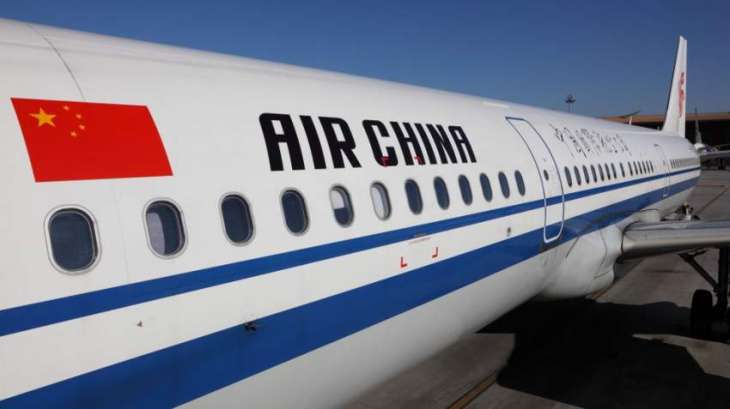
Can China's plane-maker take on Boeing and Airbus? www.bbc.com
For the past decade China, soon to become the world's largest aviation market, has been developing its own planes as it seeks to loosen Western manufacturers' grip on the sector.
The planes made by Commercial Aircraft Corporation of China - or Comac - have drawn plenty of criticism.
Few in the industry believe Chinese-made jets will rival those of Boeing and Airbus in the near-term.
But analysts say that over time, state-backed Comac - part of China's wider push into high-tech manufacturing - could challenge the established players.
"Do not underestimate Chinese ability to penetrate markets," says Shukor Yusof, founder of aviation advisory firm Endau Analytics.
He says the landscape is likely to shift from a European-US manufacturing duopoly to accommodate a third party - "and that's probably the Chinese".
What aircraft has Comac built?
So far it has built two jets - the ARJ21 and the C919 - and is working with Russia on a third.
Only the 90-seat, ARJ21 jet is in service. However, after suffering from delays, and being plagued with noise and other problems, the aircraft has been roundly rejected as inferior to planes from competitors such as Brazil's Embraer and Canada's Bombardier.
He says that while the aircraft was touted as proof China would be the next big jet maker, it turned into an "overweight and stunningly obsolete product that has no relevance outside of China's tiny regional airline sector".
A Chenghu Airlines ARJ21 jet
Comac has bigger ambitions for the C919. Seating up to 168 people, China's first large passenger jet is designed to compete with Boeing's 737 Max and Airbus's A320neo.
Its third test flight was completed in December and first deliveries are scheduled for 2021.
Comac did not respond to BBC requests for comment. But data from consultancy Frost & Sullivan shows the firm has received nearly 1,000 commitments for the C919, mostly from Chinese airlines and domestic leasing firms. The order book includes the country's three major carriers Air China, China Southern and China Eastern.
Still, some remain sceptical that Comac will hit its 2021 target given the problems that surrounded its first plane. Teal Group's Mr Aboulafia says there is a "serious risk" that by the time the C919 enters service Airbus and Boeing will have far better models on offer.
China's first passenger plane takes off
Airbus secures huge jet order from China
In partnership with Russia, Comac is also developing the CR929, a wide-body aircraft with a range of 12,000km that seats 280 passengers.
Where can Comac jets fly?
Right now, only China's aviation regulator has certified Comac jets to fly. Its aircraft may also operate in parts of Asia, Africa and South America that recognise Chinese certification.
However, to expand beyond those markets it needs the green light from the US Federal Aviation Administration (FAA) and the European Aviation Safety Agency (EASA). Those approvals are far from certain.
"There is still a big question mark over whether it will receive a Western certification," Flight Global's Asia finance editor Ellis Taylor says.
He says Comac had hoped the ARJ21 would get FAA certification "but that has been shelved indefinitely".
Can it survive without the US and Europe?
Even if those doors remain shut, Comac has access to a huge and growing market. By the mid-2020's, China's aviation market is expected to overtake the US as the world's largest by traffic.
It's a major buyer of Western planes, but the crisis facing Boeing could generate more interest in locally-made alternatives.
The country operates the largest fleet of Boeing 737 Max aircraft and was the first to ground the troubled jet after the deadly Ethiopian Airlines 737 Max crash in March. The same model was involved in a Lion Air crash that killed 189 people less than five months earlier.
Frost & Sullivan aerospace consultant Ramesh Tanjavuru says, provided Comac secures certification, Boeing's troubles could fuel the growth of the C919 in China and abroad.
"They could definitely fill the gap and be a significant player in China's market."
Where else is Comac targeting?
Comac also has its sights set on emerging markets in parts of Africa and Asia. Its planes are more affordable, with the C919's list price of reportedly about $50m (£38.8m) roughly half the price of the Airbus A320neo.
But the push into these regions also supports Beijing's broader foreign policy goals.
China, through its Belt and Road initiative, is pouring as much as $1 trillion into infrastructure projects around the world. Endau Analytics' Mr Yusof says China's entry into plane manufacturing is part of this drive.
Italy joins China's New Silk Road project
What is Made in China 2025?
He says some countries in Africa have received loans to build airports that are designed to meet the requirements of the ARJ21. Aiding poorer countries with infrastructure development, Mr Yusof says, is another way of building Comac's customer base.
"We can't just underestimate the Chinese ability to go into markets and carve a niche where Airbus and Boeing aren't interested [such as] Africa or central Asia."
...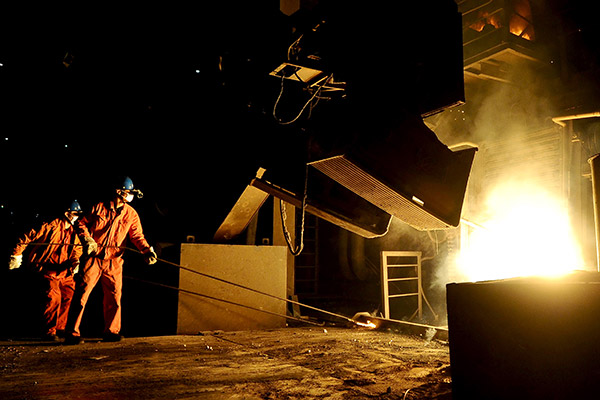
China's iron and steel association warns on over-capacity, shrinking profits www.mining.com
China's Iron and Steel Association said on Sunday the industry faces ongoing risks from excess capacity, as well as sluggish demand and increased raw material costs that could squeeze profits.
The country's sprawling steel sector, which has cut 150 million tonnes of steel production over the past three years, was "far from achieving its tasks" amid Beijing's supply-side reforms, the association said in an online statement.
Some companies were looking to boost output, turn out low-grade steel and use cheaper but more polluting induction furnaces, it said, adding that fixed asset investment in the ferrous metal refinery and processing industry rose 30.6 percent in the first quarter.
The industry should work to avoid any illicit increase in new capacity, reduce leverage and push forward with the restructuring of "zombie firms", the association said.
"Keeping the balance between demand and supply is a key premise for maintaining the stabilization of the steel market," it said.
It forecast weaker demand for iron and steel due to structural changes in the world's second-largest economy, and said the industry would not be able to sustain high production growth, which saw crude steel output jump 9.9 percent in the first quarter.
A sharp rise in the price of raw materials in the first quarter, when imported iron ore rose from $60 a tonne to $90 a tonne, had also significantly squeezed industry profitability.
The sector is also at the centre of the government's efforts to curb pollution, although complying with stricter standards could raise production costs and hurt profitability, it said.
The association also urged banks to remove restrictions on lending to the industry to help companies obtain financing and lower their costs.
(Reporting By Shu Zhang and Jenny Su; editing by Richard Pullin)
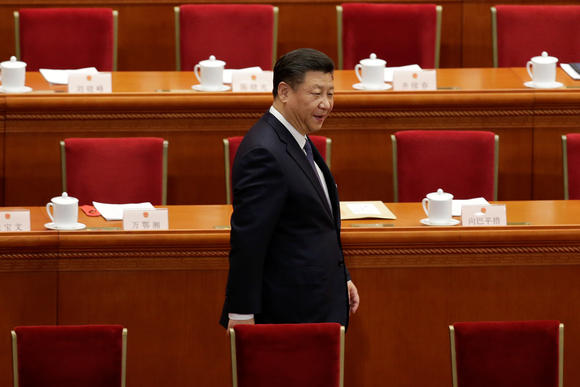
China and Mongolia sign major infrastructure deal www.news.mn
China and Mongolia have signed a cooperation plan on promoting the alignment of the China-proposed Belt and Road Initiative (BRI) with Mongolia’s Development Road Programme. The signing ceremony took place in Beijing on Thursday 25 April.
Chinese President Xi Jinping and Mongolian President Kh.Battulga witnessed the signing after their talks. Kh.Battulga is in China for a state visit and attending the Second Belt and Road Forum for International Cooperation (BRF) scheduled for April 25-27.
Xi called for more efforts to align the BRI with the Development Road Programme and promote the building of the China-Mongolia-Russia economic corridor.
Proposed by Xi in 2013, the BRI comprises the Silk Road Economic Belt and the 21st Century Maritime Silk Road, and aims to build trade and infrastructure networks connecting Asia with Europe and Africa along and beyond the ancient Silk Road routes.
Under the BRI, China, Mongolia and Russia signed an agreement in 2016 to build an economic corridor linking the three neighbours and boost transportation connectivity and economic cooperation in border regions.
The Chinese and Mongolian governments signed a memorandum of understanding on BRI cooperation during the first BRF in May 2017.
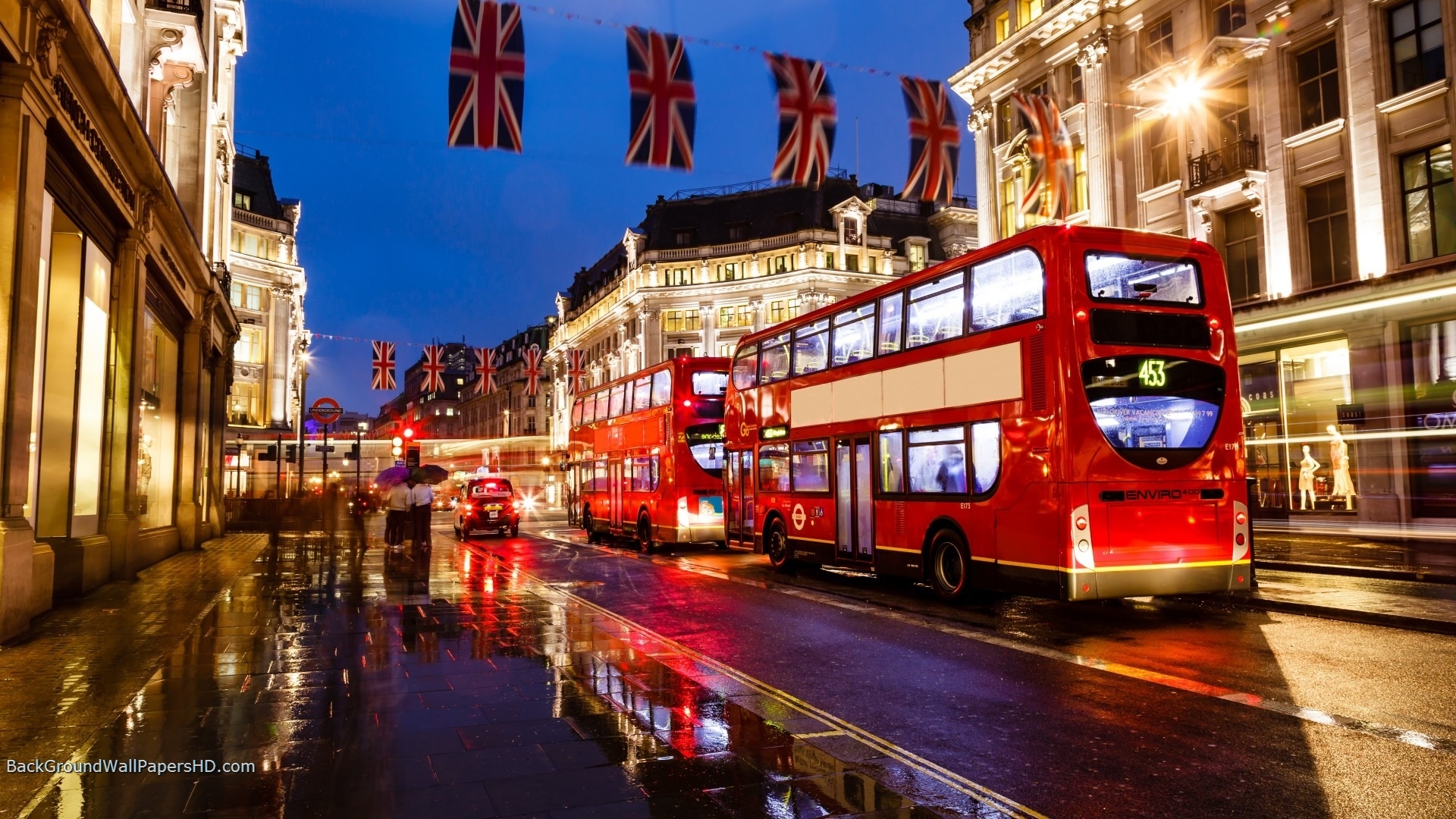
Beijing defends Huawei amid row over role in UK's 5G network www.bbc.com
The UK should make "independent" decisions about whether to let Huawei help build its 5G network, according to China's ambassador in London.
The US, Australia and New Zealand say the Chinese firm is a security risk because of its ties to the state.
But writing in the Sunday Telegraph, Liu Xiaoming said Britain should resist pressure from other nations.
He said risks should be taken seriously but added the company had enjoyed a "good track record on security".
Last week, the Daily Telegraph reported the UK had agreed to allow Huawei limited access to help build Britain's new 5G network, amid warnings about possible risks to national security.
The paper also reported that various ministers had raised concerns about the plan.
But defending Huawei, Mr Liu said: "Countries of global influence, like the UK, make decisions independently and in accordance with their national interests.
"When it comes to the establishment of the new 5G network, the UK is in the position to do the same again by resisting pressure, working to avoid interruptions and making the right decision independently based on its national interests and in line with its need for long-term development."
Meanwhile, Britain's top civil servant has demanded ministers co-operate with his inquiry into the leaking of discussions about Huawei at the National Security Council.
Sir Mark Sedwill wrote to ministers on the council and their special advisers after details of the meeting appeared in the media.
Much of the attention has focused on five ministers who were said to have voiced objections to the Huawei decision - Home Secretary Sajid Javid, Foreign Secretary Jeremy Hunt, Defence Secretary Gavin Williamson, International Development Secretary Penny Mordaunt and International Trade Secretary Liam Fox.
All five, however, have either publicly denied being the guilty party or let it be known through aides that they were not responsible.
Cabinet Secretary Sir Mark, who is also the National Security Adviser, is leading the internal inquiry.

Putin vows to connect Russia’s Northern Sea Route with China’s Maritime Silk Road www.rt.com
A global shipping lane could connect East Asia and Europe if China’s Maritime Silk Road joins Russia’s Northern Sea Route, Vladimir Putin told world leaders as they gathered for a Belt and Road meeting in Beijing.
Russia is doing its utmost to invest in its Northern Sea Route, a major maritime lane spanning between the Atlantic and Pacific oceans, but much more could be done in the future, Putin said. “We are considering connecting it with the Chinese Maritime Silk Road,” the president explained.
If that ambitious effort succeeds, “a global and competitive route connecting northeastern, eastern and southeastern Asia with Europe” will emerge. All countries taking part in the Belt and Road Initiative are therefore encouraged to embark on the project.
Inspired by the historic trade routes that connected Europe to East Asia, Beijing’s Maritime Silk Road project makes up the overseas portion of its Belt and Road Initiative by linking Chinese ports to ones in Europe, Southeast Asia, the Middle East, and East Africa. However, routes passing through disputed territories in the South China Sea could potentially raise geopolitical tensions with neighboring Vietnam, the Philippines Malaysia, and Taiwan if left unresolved. The waterway sees $5 trillion in trade pass through it every year.
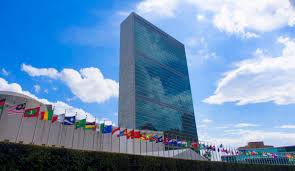
UN expert to visit Mongolia to assess situation of human rights defenders www.ohchr.org
GENEVA (26 April 2019) – The UN Special Rapporteur on the situation of human rights defenders, Michel Forst, will undertake his first official visit to Mongolia from 30 April to 13 May 2019.
"As the Government of Mongolia is considering a draft law to protect human rights defenders, my visit is particularly timely," said the UN expert. "I look forward to fruitful discussions with executive representatives, as well as officials from the legislative and judicial branches.
"I will also meet with human rights defenders to understand the situation they face in Mongolia and to explore how my mandate can better support their work."
Highlighting the recently adopted Human Rights Council’s resolution which recognises the key role played by human rights defenders in the protection of the environment, the Special Rapporteur said that his visit would also allow him to look into the specific situation of environmental human rights defenders.
"During my visit, I intend to analyse how the government of Mongolia is ensuring that people and communities can safely promote and defend human rights and the environment," said Forst. "This seems particularly important in a country where the population has historically always lived in harmony with nature, but is now facing rapid industrial growth, urbanisation, mining and other extractive activities that impact on their rights."
During his two-week visit, at the invitation of the Government, the human rights expert will meet Government officials, human rights defenders and representatives of civil society, and the business sector, in Ulaanbaatar areas and Dornogovi aimag.
Forst will present his preliminary observations on the visit at a press conference on Monday 13 May 2019, at 11 am local time, in the UN Auditorium, UN House, UN Street-14, Sukhbaatar District, Ulaanbaatar. Access will be strictly limited to journalists.
The Special Rapporteur will present a comprehensive report of this visit to the UN Human Rights Council in March 2020.
ENDS
Mr. Michel Forst (France) was appointed by the Human Rights Council as the UN Special Rapporteur on the situation of human rights defenders in 2014. Mr. Forst has extensive experience of human rights issues and specifically of the situation of human rights defenders. He was the Director General of Amnesty International (France) and Secretary General of the first World Summit on Human Rights Defenders in 1998. He is a former UN Independent Expert on the human rights situation in Haiti.
The Special Rapporteurs are part of what is known as the Special Procedures of the Human Rights Council. Special Procedures, the largest body of independent experts in the UN Human Rights system, is the general name of the Council’s independent fact-finding and monitoring mechanisms that address either specific country situations or thematic issues in all parts of the world. Special Procedures’ experts work on a voluntary basis; they are not UN staff and do not receive a salary for their work. They are independent from any government or organization and serve in their individual capacity.
UN Human Rights, Country Page: Mongolia
The Special Rapporteur is mandated to conduct official visits to States on their invitation. These visits provide an opportunity to examine in detail the role and situation of human rights defenders in the country, to identify particular problems and to make recommendations on how these could be resolved. By the nature of the mandate, the Special Rapporteur is required to look critically at the situation of human rights defenders in a country. Nevertheless, the process is intended to provide an independent and impartial assessment which will be of use to all actors in strengthening both the contribution of defenders to human rights and their protection.
Issues raised during such visits include: violations committed against human rights defenders; challenges to the "environment" within which defenders conduct their human rights work, including freedoms of association and expression, access to funding and the support to defenders provided by domestic legislation; and efforts undertaken by the authorities to protect human rights defenders from violations.
A few months after each visit, the Special Rapporteur issues a report on the visit indicating, among other things, main concerns and recommendations for action. The report is then formally presented by the Special Rapporteur at the Human Rights Council.
For additional information, please contact: Thibaut Guillet (+41 22 917 9158 / +41 22 79 752 0486 / tguillet@ohchr.org)
For media inquiries related to other UN independent experts: Jeremy Laurence (+ 41 22 917 9383 / jlaurence@ohchr.org)
...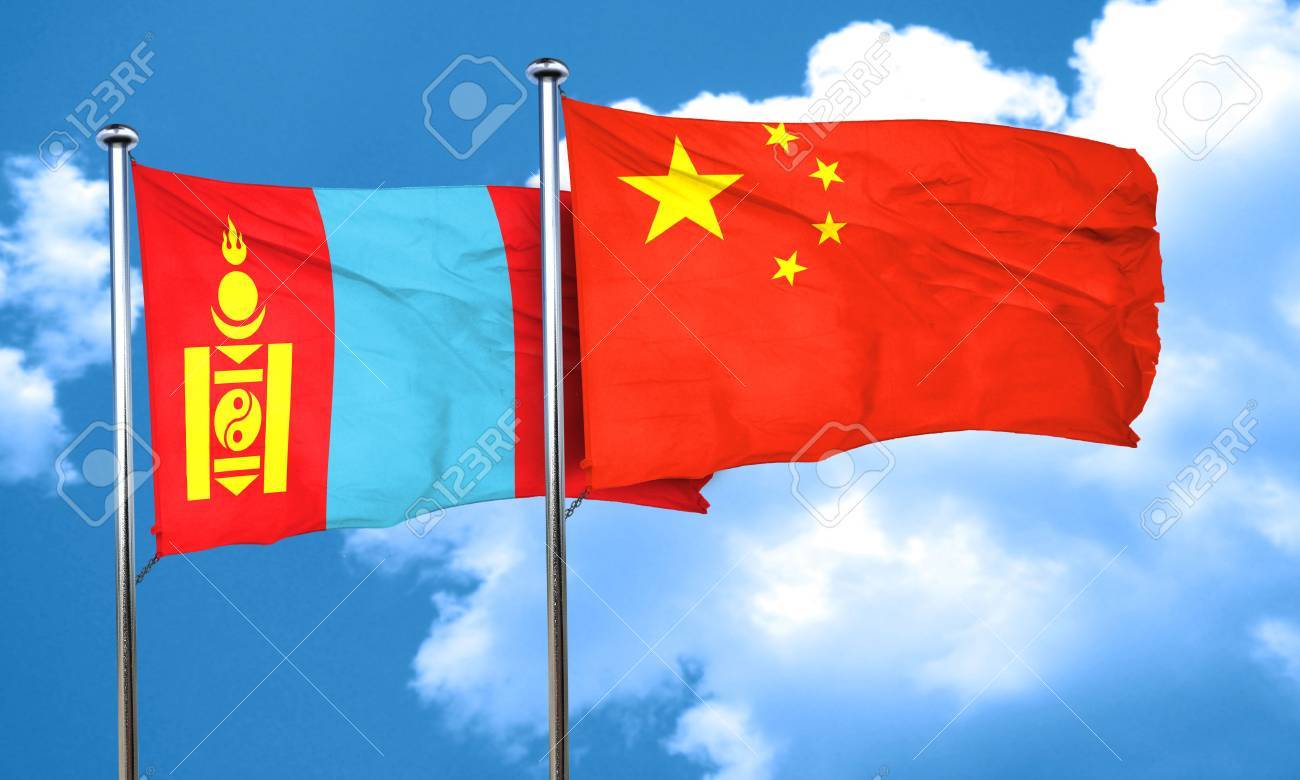
Cooperation agreements signed between Mongolian and Chinese companies www.montsame.mn
Beijing /MONTSAME/ Within the framework of the President’s state visit to the People’s Republic of China, private entities of Mongolia and China signed following agreements.
- Special credit agreement on the construction of 20.9 km road from Gachuurt crossroad to Nalaikh-Choir crossroad
- Memorandum of Understanding between the Ministry of Education, Culture, Science and Sports of Mongolia and the National Radio and Television Administration of China
- Agreement between ‘Ulaanbaatar Railway’ JCS and China Railway General Company on exchange of digital data on international freight forwarding
- General Cooperation Agreement between Erdenes Steel LLC and Sinosteel Equipment and Engineering Co., Ltd. on the Coke and Steel Plant project in Mongolia
- Agreement between Tsetsens Mining and Energy LLC and Sinosteel Equipment and Engineering Co., Ltd. on the construction of the Buuruljuut coal power plant
- ‘New Amgalan town’ project agreement between Gangar Invest LLC and SAMS Engineering China LLC
- Cooperation agreement between Moshea Eco energy LLC and China National Technical Import and Export Corporation
- Cooperation and trade agreement between Ish Noyon Badrakh LLC and Haifu Accumulator LLC of Hebei province of China
- MoU on cooperation between the New World Union and Gobi Bear Foundation
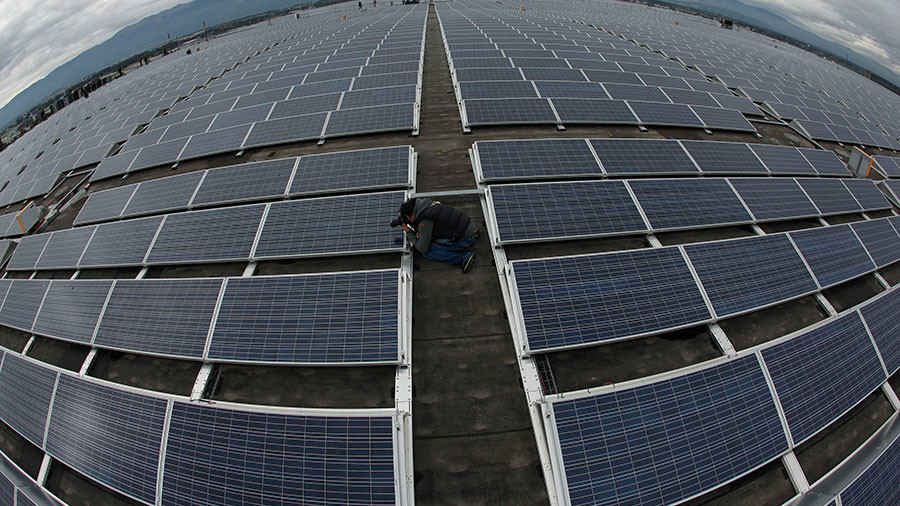
$13.6B record-breaking solar park rises from Dubai desert www.cnn.com
Under the Arabian sun, a monumental construction effort is making headway. Located deep within Dubai's desert interior, the Mohammed Bin Rashid Al Maktoum Solar Park -- named after the emirate's ruler and the UAE's vice president and prime minister -- continues to grow and has just passed another milestone.
In its eighth year of development, satellite images give a sense of scale already: miles of photovoltaics arranged along neat east-west lines, their uniformity at odds with the creases and crinkles of the sands surrounding the energy plant. Once finished, Dubai Energy and Water Authority (DEWA) told CNN the 50 billion-dirham ($13.6 billion) investment could power as many as 1.3 million homes, reducing carbon emissions by 6.5 million tonnes annually.
First announced in 2012 and with a scheduled completion date of 2030, the 5,000-megawatt solar park will take three times as long to finish as the Burj Khalifa. Phases one and two, which are already complete, comprised 2.3 million photovoltaic panels with a capacity of 213 megawatts. Phase three, deep in construction, adds over 3 million photovoltaics and another 800 megawatts, and will be completed in 2020, say DEWA.
The untold story of Dubai's first skyscraper
But after years of spreading out across the desert floor, the solar project is now rising upward with phase four -- perhaps the most ambitious development yet.
After breaking ground in March 2018, the base is now complete for what DEWA claims will be the tallest concentrated solar power (CSP) tower in the world.
It will use mirrors called heliostats to focus sunlight at the top of the tower, in order to heat up a flow of molten salts. The heat is used to power steam turbines, generating electricity.
"Typically, CSP will have efficiencies which are slightly higher than photovoltaics (PVs)," Christos Markides, professor of clean energy technologies at Imperial College London, told CNN. CSP stores energy as heat rather than in batteries. "Thermal energy storage is something like 10-times cheaper than electrical energy storage," he explained. "That gives that particular technology an advantage."
Expo 2020 Dubai plans to bring sustainable architecture home
Practically speaking, it means CSP can continue to create electricity even without the sun and well into the night. Dubai's tower can store heat for 15 hours and will be able to provide power 24 hours a day, said DEWA. The CSP tower will top out at 260 meters (853 feet) when completed, DEWA added, and will be surrounded by 70,000 heliostats.
In addition to the 100-megwatt CSP tower, phase four will supply another 850 megawatts of power via parabolic troughs (another form of CSP) and photovoltaics. It was recently announced that phase five's 900 megawatts of photovoltaics will be commissioned in stages starting 2021, while remaining installations to bring the park up to its end goal of 5,000 megawatts are still in planning.
With a capacity of 1,963 megawatts, phases one to four alone put the Mohammed Bin Rashid Al Maktoum Solar Park high on the list of largest-capacity solar parks in development around the world. The Ladakh Solar Farm in India will produce 3,000 megawatts when operational in 2023, per the World Economic Forum. At the time of writing, the 1,547-megawatt Tengger Desert Solar Park in Ningxia, China is considered the largest operating photovoltaic park in the world.
But building to these colossal proportions is only part of the battle. Resilience -- combating hostile climates and the ravages of time -- is also key.
$5 billion Dubai megaresort rises from The World
"Dust remains a significant challenge," DEWA told CNN via email, "as dust accumulation on modules can substantially reduce the power generation of those modules." The government department said as well as studying panel coating technologies it is implementing "a dry robotic cleaning system to clean the whole plant in a very short time."
Markides also said temperature is an important factor: "(Photovoltaics) degrade faster if the temperatures swing wildly between, say, very cold and very hot -- and they also degrade if the temperatures particularly become very hot." In Dubai, summer temperatures can move from the high-40s Celsius in the day to mid-teens at night.
The Dubai Clean Energy Strategy 2050 is working towards generating 25% of its energy output from clean sources by 2030, and 75% by 2050 -- equivalent to a capacity of 42,000 megawatts.
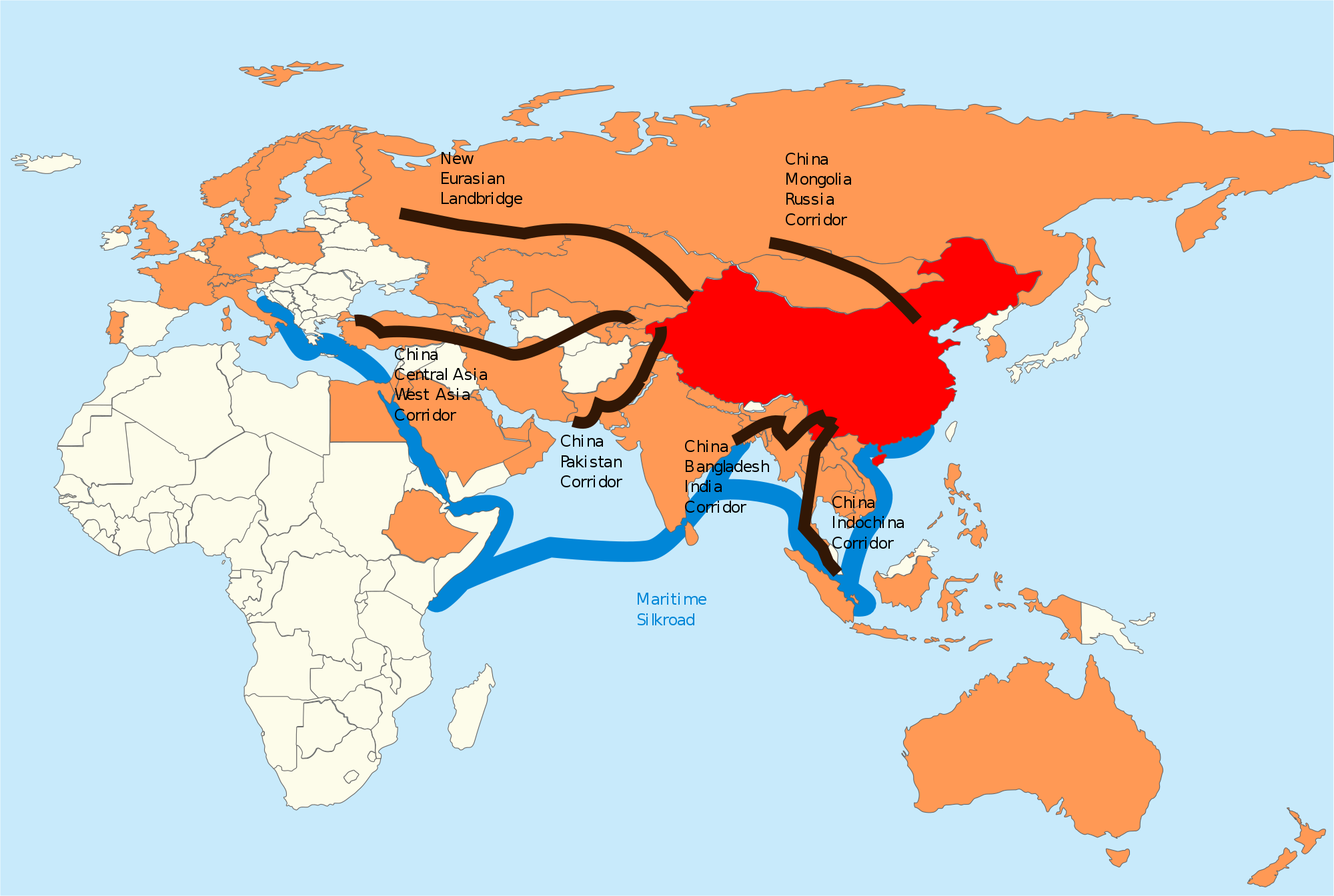
Belt and Road to make Russia-China trade more balanced – experts to RT www.rt.com
Russia and China complement one another economically, according to political scientist Joseph Cheng. He said the two countries’ trade could become even more balanced with the help of the Belt & Road Initiative.
Speaking to RT ahead of Russian President Vladimir Putin’s arrival to Beijing on Thursday, he said that Russia’s role is very important, particularly due to its significant natural resources.
“Certainly, Russia is a major exporter of natural resources, especially energy resources. And China needs that badly,” the retired professor of the City University of Hong Kong said.
He explained that Russia’s supplies of natural resources reduce China’s dependence on the Middle East, on trade routes from the Mediterranean, the Red Sea, and across the Indian Ocean to China’s coast.
“[The] Belt and Road project gives a lot of opportunity for the trade to become balanced,” he said.
International financial expert Andrew Leung also spoke to RT, saying that “Right from the start, Russia features significantly in the Belt and Road…”
According to him, “Russia is important as a large energy supplier and as a geopolitical counterweight to America's global pushback against China.”
There is much synergy with the Russia-led Eurasia Economic Union (EEU), he said. The Belt and Road links virtually all countries in the EEU, including land-locked nations in the Shanghai Cooperation Organization co-founded by Russia and China. “The B&R (Belt and Road) regional infrastructural links are set to unlock the economic and human potential of the Eurasia Economic Union, to the benefit of all,” said the strategist.
The second Belt and Road Forum for International Cooperation will be held in China on April 25 – 27. The Russian president, who arrived in Beijing on Thursday, will hold a series of meetings, including with his Chinese counterpart Xi Jinping. Putin told China’s Renmin Ribao newspaper ahead of his visit that “The ties between Russia and China are at their highest point in the entire 70-year history of diplomatic relations and will continue to develop steadily.”
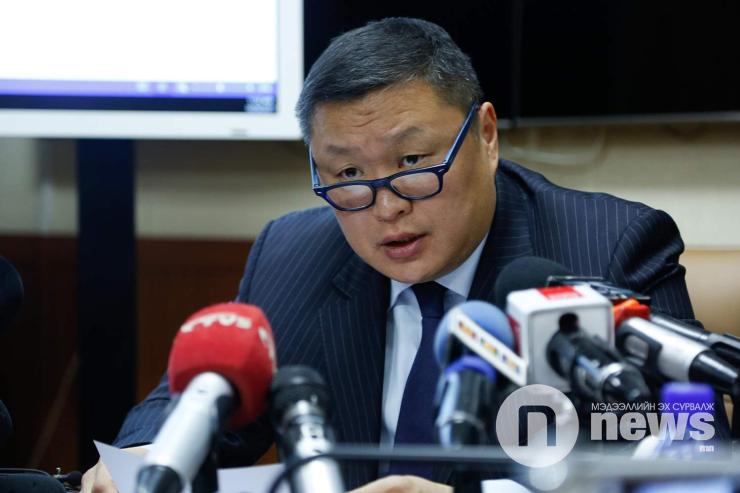
Former Spymaster held over ‘Torture to Confess’ scandal www.news.mn
The Chingeltei District Court decided (25 April) to extend the detention of B.Khurts, the controversial former director of Mongolian’s General Intelligence Agency (GIA) for 15 days at the request of the prosecutors. He has been detained by the Criminal Police Department over the ‘torture to confess’ case. B.Khurts was taken to the 461st Detention Centre on 23 April. While in custody, he refused to give a statement without formal approval of D.Gerel, the current director of GIA.
B.Khurts was accused of breaching of laws on intelligence procedures for having used torture to obtain a confession from defendants of the much-publicised murder case of the politician S.Zorig, who one of the heroes of Mongolia’s peaceful transition to democracy and a likely future prime-minister. Following an investigation lasting two decades – in which there have been accusations of cover-ups and during which numerous people, including the victim’s wife, have been detained – Ts.Amgalanbaatar and two others were sentenced to 24-25 years in prison for the murder of S.Zorig.
The murder of S.Zorig case was transferred to the Criminal Police Department from Independent Authority of Anti-Corruption due to the lack of human resources on 19 March.
- «
- 1
- 2
- 3
- 4
- 5
- 6
- 7
- 8
- 9
- 10
- 11
- 12
- 13
- 14
- 15
- 16
- 17
- 18
- 19
- 20
- 21
- 22
- 23
- 24
- 25
- 26
- 27
- 28
- 29
- 30
- 31
- 32
- 33
- 34
- 35
- 36
- 37
- 38
- 39
- 40
- 41
- 42
- 43
- 44
- 45
- 46
- 47
- 48
- 49
- 50
- 51
- 52
- 53
- 54
- 55
- 56
- 57
- 58
- 59
- 60
- 61
- 62
- 63
- 64
- 65
- 66
- 67
- 68
- 69
- 70
- 71
- 72
- 73
- 74
- 75
- 76
- 77
- 78
- 79
- 80
- 81
- 82
- 83
- 84
- 85
- 86
- 87
- 88
- 89
- 90
- 91
- 92
- 93
- 94
- 95
- 96
- 97
- 98
- 99
- 100
- 101
- 102
- 103
- 104
- 105
- 106
- 107
- 108
- 109
- 110
- 111
- 112
- 113
- 114
- 115
- 116
- 117
- 118
- 119
- 120
- 121
- 122
- 123
- 124
- 125
- 126
- 127
- 128
- 129
- 130
- 131
- 132
- 133
- 134
- 135
- 136
- 137
- 138
- 139
- 140
- 141
- 142
- 143
- 144
- 145
- 146
- 147
- 148
- 149
- 150
- 151
- 152
- 153
- 154
- 155
- 156
- 157
- 158
- 159
- 160
- 161
- 162
- 163
- 164
- 165
- 166
- 167
- 168
- 169
- 170
- 171
- 172
- 173
- 174
- 175
- 176
- 177
- 178
- 179
- 180
- 181
- 182
- 183
- 184
- 185
- 186
- 187
- 188
- 189
- 190
- 191
- 192
- 193
- 194
- 195
- 196
- 197
- 198
- 199
- 200
- 201
- 202
- 203
- 204
- 205
- 206
- 207
- 208
- 209
- 210
- 211
- 212
- 213
- 214
- 215
- 216
- 217
- 218
- 219
- 220
- 221
- 222
- 223
- 224
- 225
- 226
- 227
- 228
- 229
- 230
- 231
- 232
- 233
- 234
- 235
- 236
- 237
- 238
- 239
- 240
- 241
- 242
- 243
- 244
- 245
- 246
- 247
- 248
- 249
- 250
- 251
- 252
- 253
- 254
- 255
- 256
- 257
- 258
- 259
- 260
- 261
- 262
- 263
- 264
- 265
- 266
- 267
- 268
- 269
- 270
- 271
- 272
- 273
- 274
- 275
- 276
- 277
- 278
- 279
- 280
- 281
- 282
- 283
- 284
- 285
- 286
- 287
- 288
- 289
- 290
- 291
- 292
- 293
- 294
- 295
- 296
- 297
- 298
- 299
- 300
- 301
- 302
- 303
- 304
- 305
- 306
- 307
- 308
- 309
- 310
- 311
- 312
- 313
- 314
- 315
- 316
- 317
- 318
- 319
- 320
- 321
- 322
- 323
- 324
- 325
- 326
- 327
- 328
- 329
- 330
- 331
- 332
- 333
- 334
- 335
- 336
- 337
- 338
- 339
- 340
- 341
- 342
- 343
- 344
- 345
- 346
- 347
- 348
- 349
- 350
- 351
- 352
- 353
- 354
- 355
- 356
- 357
- 358
- 359
- 360
- 361
- 362
- 363
- 364
- 365
- 366
- 367
- 368
- 369
- 370
- 371
- 372
- 373
- 374
- 375
- 376
- 377
- 378
- 379
- 380
- 381
- 382
- 383
- 384
- 385
- 386
- 387
- 388
- 389
- 390
- 391
- 392
- 393
- 394
- 395
- 396
- 397
- 398
- 399
- 400
- 401
- 402
- 403
- 404
- 405
- 406
- 407
- 408
- 409
- 410
- 411
- 412
- 413
- 414
- 415
- 416
- 417
- 418
- 419
- 420
- 421
- 422
- 423
- 424
- 425
- 426
- 427
- 428
- 429
- 430
- 431
- 432
- 433
- 434
- 435
- 436
- 437
- 438
- 439
- 440
- 441
- 442
- 443
- 444
- 445
- 446
- 447
- 448
- 449
- 450
- 451
- 452
- 453
- 454
- 455
- 456
- 457
- 458
- 459
- 460
- 461
- 462
- 463
- 464
- 465
- 466
- 467
- 468
- 469
- 470
- 471
- 472
- 473
- 474
- 475
- 476
- 477
- 478
- 479
- 480
- 481
- 482
- 483
- 484
- 485
- 486
- 487
- 488
- 489
- 490
- 491
- 492
- 493
- 494
- 495
- 496
- 497
- 498
- 499
- 500
- 501
- 502
- 503
- 504
- 505
- 506
- 507
- 508
- 509
- 510
- 511
- 512
- 513
- 514
- 515
- 516
- 517
- 518
- 519
- 520
- 521
- 522
- 523
- 524
- 525
- 526
- 527
- 528
- 529
- 530
- 531
- 532
- 533
- 534
- 535
- 536
- 537
- 538
- 539
- 540
- 541
- 542
- 543
- 544
- 545
- 546
- 547
- 548
- 549
- 550
- 551
- 552
- 553
- 554
- 555
- 556
- 557
- 558
- 559
- 560
- 561
- 562
- 563
- 564
- 565
- 566
- 567
- 568
- 569
- 570
- 571
- 572
- 573
- 574
- 575
- 576
- 577
- 578
- 579
- 580
- 581
- 582
- 583
- 584
- 585
- 586
- 587
- 588
- 589
- 590
- 591
- 592
- 593
- 594
- 595
- 596
- 597
- 598
- 599
- 600
- 601
- 602
- 603
- 604
- 605
- 606
- 607
- 608
- 609
- 610
- 611
- 612
- 613
- 614
- 615
- 616
- 617
- 618
- 619
- 620
- 621
- 622
- 623
- 624
- 625
- 626
- 627
- 628
- 629
- 630
- 631
- 632
- 633
- 634
- 635
- 636
- 637
- 638
- 639
- 640
- 641
- 642
- 643
- 644
- 645
- 646
- 647
- 648
- 649
- 650
- 651
- 652
- 653
- 654
- 655
- 656
- 657
- 658
- 659
- 660
- 661
- 662
- 663
- 664
- 665
- 666
- 667
- 668
- 669
- 670
- 671
- 672
- 673
- 674
- 675
- 676
- 677
- 678
- 679
- 680
- 681
- 682
- 683
- 684
- 685
- 686
- 687
- 688
- 689
- 690
- 691
- 692
- 693
- 694
- 695
- 696
- 697
- 698
- 699
- 700
- 701
- 702
- 703
- 704
- 705
- 706
- 707
- 708
- 709
- 710
- 711
- 712
- 713
- 714
- 715
- 716
- 717
- 718
- 719
- 720
- 721
- 722
- 723
- 724
- 725
- 726
- 727
- 728
- 729
- 730
- 731
- 732
- 733
- 734
- 735
- 736
- 737
- 738
- 739
- 740
- 741
- 742
- 743
- 744
- 745
- 746
- 747
- 748
- 749
- 750
- 751
- 752
- 753
- 754
- 755
- 756
- 757
- 758
- 759
- 760
- 761
- 762
- 763
- 764
- 765
- 766
- 767
- 768
- 769
- 770
- 771
- 772
- 773
- 774
- 775
- 776
- 777
- 778
- 779
- 780
- 781
- 782
- 783
- 784
- 785
- 786
- 787
- 788
- 789
- 790
- 791
- 792
- 793
- 794
- 795
- 796
- 797
- 798
- 799
- 800
- 801
- 802
- 803
- 804
- 805
- 806
- 807
- 808
- 809
- 810
- 811
- 812
- 813
- 814
- 815
- 816
- 817
- 818
- 819
- 820
- 821
- 822
- 823
- 824
- 825
- 826
- 827
- 828
- 829
- 830
- 831
- 832
- 833
- 834
- 835
- 836
- 837
- 838
- 839
- 840
- 841
- 842
- 843
- 844
- 845
- 846
- 847
- 848
- 849
- 850
- 851
- 852
- 853
- 854
- 855
- 856
- 857
- 858
- 859
- 860
- 861
- 862
- 863
- 864
- 865
- 866
- 867
- 868
- 869
- 870
- 871
- 872
- 873
- 874
- 875
- 876
- 877
- 878
- 879
- 880
- 881
- 882
- 883
- 884
- 885
- 886
- 887
- 888
- 889
- 890
- 891
- 892
- 893
- 894
- 895
- 896
- 897
- 898
- 899
- 900
- 901
- 902
- 903
- 904
- 905
- 906
- 907
- 908
- 909
- 910
- 911
- 912
- 913
- 914
- 915
- 916
- 917
- 918
- 919
- 920
- 921
- 922
- 923
- 924
- 925
- 926
- 927
- 928
- 929
- 930
- 931
- 932
- 933
- 934
- 935
- 936
- 937
- 938
- 939
- 940
- 941
- 942
- 943
- 944
- 945
- 946
- 947
- 948
- 949
- 950
- 951
- 952
- 953
- 954
- 955
- 956
- 957
- 958
- 959
- 960
- 961
- 962
- 963
- 964
- 965
- 966
- 967
- 968
- 969
- 970
- 971
- 972
- 973
- 974
- 975
- 976
- 977
- 978
- 979
- 980
- 981
- 982
- 983
- 984
- 985
- 986
- 987
- 988
- 989
- 990
- 991
- 992
- 993
- 994
- 995
- 996
- 997
- 998
- 999
- 1000
- 1001
- 1002
- 1003
- 1004
- 1005
- 1006
- 1007
- 1008
- 1009
- 1010
- 1011
- 1012
- 1013
- 1014
- 1015
- 1016
- 1017
- 1018
- 1019
- 1020
- 1021
- 1022
- 1023
- 1024
- 1025
- 1026
- 1027
- 1028
- 1029
- 1030
- 1031
- 1032
- 1033
- 1034
- 1035
- 1036
- 1037
- 1038
- 1039
- 1040
- 1041
- 1042
- 1043
- 1044
- 1045
- 1046
- 1047
- 1048
- 1049
- 1050
- 1051
- 1052
- 1053
- 1054
- 1055
- 1056
- 1057
- 1058
- 1059
- 1060
- 1061
- 1062
- 1063
- 1064
- 1065
- 1066
- 1067
- 1068
- 1069
- 1070
- 1071
- 1072
- 1073
- 1074
- 1075
- 1076
- 1077
- 1078
- 1079
- 1080
- 1081
- 1082
- 1083
- 1084
- 1085
- 1086
- 1087
- 1088
- 1089
- 1090
- 1091
- 1092
- 1093
- 1094
- 1095
- 1096
- 1097
- 1098
- 1099
- 1100
- 1101
- 1102
- 1103
- 1104
- 1105
- 1106
- 1107
- 1108
- 1109
- 1110
- 1111
- 1112
- 1113
- 1114
- 1115
- 1116
- 1117
- 1118
- 1119
- 1120
- 1121
- 1122
- 1123
- 1124
- 1125
- 1126
- 1127
- 1128
- 1129
- 1130
- 1131
- 1132
- 1133
- 1134
- 1135
- 1136
- 1137
- 1138
- 1139
- 1140
- 1141
- 1142
- 1143
- 1144
- 1145
- 1146
- 1147
- 1148
- 1149
- 1150
- 1151
- 1152
- 1153
- 1154
- 1155
- 1156
- 1157
- 1158
- 1159
- 1160
- 1161
- 1162
- 1163
- 1164
- 1165
- 1166
- 1167
- 1168
- 1169
- 1170
- 1171
- 1172
- 1173
- 1174
- 1175
- 1176
- 1177
- 1178
- 1179
- 1180
- 1181
- 1182
- 1183
- 1184
- 1185
- 1186
- 1187
- 1188
- 1189
- 1190
- 1191
- 1192
- 1193
- 1194
- 1195
- 1196
- 1197
- 1198
- 1199
- 1200
- 1201
- 1202
- 1203
- 1204
- 1205
- 1206
- 1207
- 1208
- 1209
- 1210
- 1211
- 1212
- 1213
- 1214
- 1215
- 1216
- 1217
- 1218
- 1219
- 1220
- 1221
- 1222
- 1223
- 1224
- 1225
- 1226
- 1227
- 1228
- 1229
- 1230
- 1231
- 1232
- 1233
- 1234
- 1235
- 1236
- 1237
- 1238
- 1239
- 1240
- 1241
- 1242
- 1243
- 1244
- 1245
- 1246
- 1247
- 1248
- 1249
- 1250
- 1251
- 1252
- 1253
- 1254
- 1255
- 1256
- 1257
- 1258
- 1259
- 1260
- 1261
- 1262
- 1263
- 1264
- 1265
- 1266
- 1267
- 1268
- 1269
- 1270
- 1271
- 1272
- 1273
- 1274
- 1275
- 1276
- 1277
- 1278
- 1279
- 1280
- 1281
- 1282
- 1283
- 1284
- 1285
- 1286
- 1287
- 1288
- 1289
- 1290
- 1291
- 1292
- 1293
- 1294
- 1295
- 1296
- 1297
- 1298
- 1299
- 1300
- 1301
- 1302
- 1303
- 1304
- 1305
- 1306
- 1307
- 1308
- 1309
- 1310
- 1311
- 1312
- 1313
- 1314
- 1315
- 1316
- 1317
- 1318
- 1319
- 1320
- 1321
- 1322
- 1323
- 1324
- 1325
- 1326
- 1327
- 1328
- 1329
- 1330
- 1331
- 1332
- 1333
- 1334
- 1335
- 1336
- 1337
- 1338
- 1339
- 1340
- 1341
- 1342
- 1343
- 1344
- 1345
- 1346
- 1347
- 1348
- 1349
- 1350
- 1351
- 1352
- 1353
- 1354
- 1355
- 1356
- 1357
- 1358
- 1359
- 1360
- 1361
- 1362
- 1363
- 1364
- 1365
- 1366
- 1367
- 1368
- 1369
- 1370
- 1371
- 1372
- 1373
- 1374
- 1375
- 1376
- 1377
- 1378
- 1379
- 1380
- 1381
- 1382
- 1383
- 1384
- 1385
- 1386
- 1387
- 1388
- 1389
- 1390
- 1391
- 1392
- 1393
- 1394
- 1395
- 1396
- 1397
- 1398
- 1399
- 1400
- 1401
- 1402
- 1403
- 1404
- 1405
- 1406
- 1407
- 1408
- 1409
- 1410
- 1411
- 1412
- 1413
- 1414
- 1415
- 1416
- 1417
- 1418
- 1419
- 1420
- 1421
- 1422
- 1423
- 1424
- 1425
- 1426
- 1427
- 1428
- 1429
- 1430
- 1431
- 1432
- 1433
- 1434
- 1435
- 1436
- 1437
- 1438
- 1439
- 1440
- 1441
- 1442
- 1443
- 1444
- 1445
- 1446
- 1447
- 1448
- 1449
- 1450
- 1451
- 1452
- 1453
- 1454
- 1455
- 1456
- 1457
- 1458
- 1459
- 1460
- 1461
- 1462
- 1463
- 1464
- 1465
- 1466
- 1467
- 1468
- 1469
- 1470
- 1471
- 1472
- 1473
- 1474
- 1475
- 1476
- 1477
- 1478
- 1479
- 1480
- 1481
- 1482
- 1483
- 1484
- 1485
- 1486
- 1487
- 1488
- 1489
- 1490
- 1491
- 1492
- 1493
- 1494
- 1495
- 1496
- 1497
- 1498
- 1499
- 1500
- 1501
- 1502
- 1503
- 1504
- 1505
- 1506
- 1507
- 1508
- 1509
- 1510
- 1511
- 1512
- 1513
- 1514
- 1515
- 1516
- 1517
- 1518
- 1519
- 1520
- 1521
- 1522
- 1523
- 1524
- 1525
- 1526
- 1527
- 1528
- 1529
- 1530
- 1531
- 1532
- 1533
- 1534
- 1535
- 1536
- 1537
- 1538
- 1539
- 1540
- 1541
- 1542
- 1543
- 1544
- 1545
- 1546
- 1547
- 1548
- 1549
- 1550
- 1551
- 1552
- 1553
- 1554
- 1555
- 1556
- 1557
- 1558
- 1559
- 1560
- 1561
- 1562
- 1563
- 1564
- 1565
- 1566
- 1567
- 1568
- 1569
- 1570
- 1571
- 1572
- 1573
- 1574
- 1575
- 1576
- 1577
- 1578
- 1579
- 1580
- 1581
- 1582
- 1583
- 1584
- 1585
- 1586
- 1587
- 1588
- 1589
- 1590
- 1591
- 1592
- 1593
- 1594
- 1595
- 1596
- 1597
- 1598
- 1599
- 1600
- 1601
- 1602
- 1603
- 1604
- 1605
- 1606
- 1607
- 1608
- 1609
- 1610
- 1611
- 1612
- 1613
- 1614
- 1615
- 1616
- 1617
- 1618
- 1619
- 1620
- 1621
- 1622
- 1623
- 1624
- 1625
- 1626
- 1627
- 1628
- 1629
- 1630
- 1631
- 1632
- 1633
- 1634
- 1635
- 1636
- 1637
- 1638
- 1639
- 1640
- 1641
- 1642
- 1643
- 1644
- 1645
- 1646
- 1647
- 1648
- 1649
- 1650
- 1651
- 1652
- 1653
- 1654
- 1655
- 1656
- 1657
- 1658
- 1659
- 1660
- 1661
- 1662
- 1663
- 1664
- 1665
- 1666
- 1667
- 1668
- 1669
- 1670
- 1671
- 1672
- 1673
- 1674
- 1675
- 1676
- 1677
- 1678
- 1679
- 1680
- 1681
- 1682
- 1683
- 1684
- 1685
- 1686
- 1687
- 1688
- 1689
- 1690
- 1691
- 1692
- 1693
- 1694
- »






